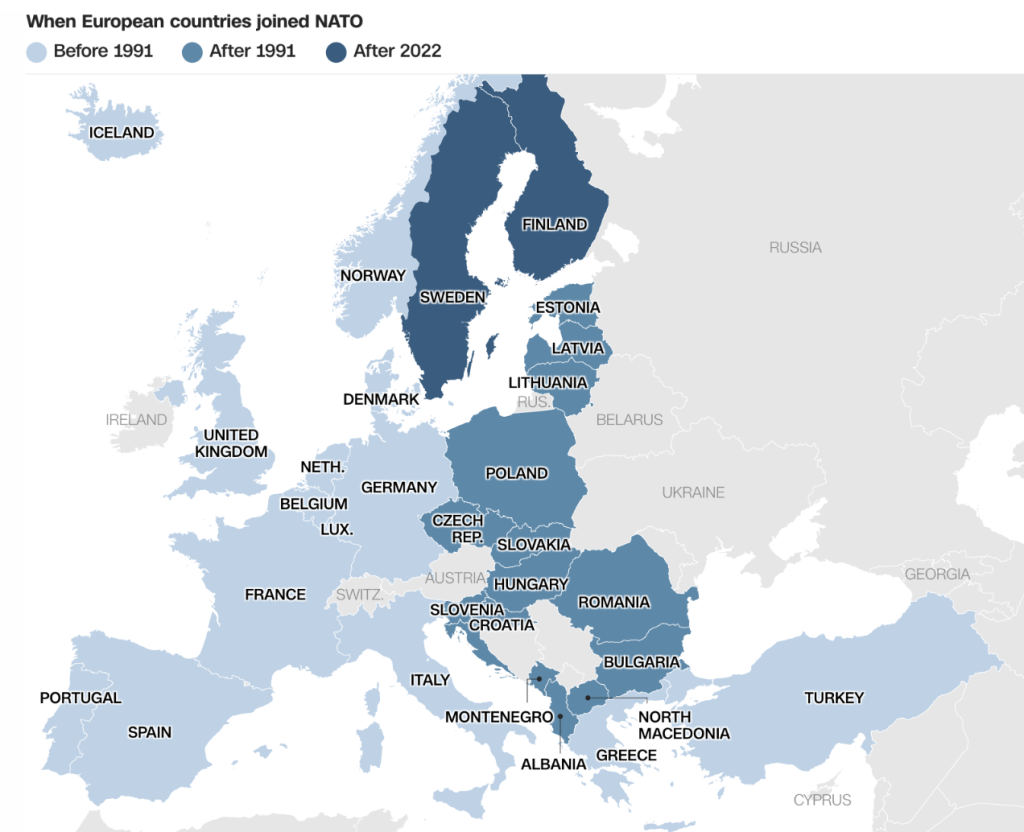Finland and Sweden join NATO
By: Oliver Straight Nissen
Finland and Sweden have joined the North Atlantic Treaty Organization (NATO), being annexed on April 4, 2023 and March 7, 2024, respectively. Their inclusion means that the entirety of Northern Europe is now united under NATO, which will only further strengthen the region. However, with NATO’s expansion to the Russian border increasing Western influence, it will certainly make Russia feel more threatened.
NATO was formed between the United States and Europe in 1949 with the explicit goal of rebuilding Europe after the Second World War and the implicit goal of protecting Europe from the Soviet Union’s communist regime. This alliance was formed in response to the Soviet creation of the Iron Curtain in 1945, which used Eastern Europe as a ‘buffer zone’ between the West’s capitalist ideologies and the Soviet’s communist principles. Furthermore, the neutral zone prevented a direct march of Western troops into the Soviet Union. The Iron Curtain attempted to maintain peace in Europe and avert another catastrophic war, which it accomplished amid the Cold War. Before the collapse of the Soviet Union in 1991, NATO stayed in Western Europe, with Turkey and Greece being the easternmost members of the alliance (their membership didn’t threaten Russia because of their southern locations). Yet, post-Soviet collapse, NATO granted membership to many Eastern European countries, with some bordering Russia such as Estonia and Latvia. With the recent additions of Finland and Sweden, NATO has extended its direct border access to Russia even further.
Finland and Sweden have long been neutral when it comes to global stage conflicts; both withheld from the two World Wars and the Cold War. However, Russia’s invasion of Ukraine in 2022 signaled to Finland and Sweden that other nearby countries could also face the risk of invasion, especially because they lack strong alliances. To protect themselves from future threats, the two Nordic countries quickly applied for NATO. Finland and Sweden joining NATO threaten Russia for two reasons. First, it gives NATO another, larger access point into Russia. Second, it spells out even stronger NATO control of the Baltic Sea, where a significant amount of Russia’s navy is located. Should a conflict require naval warfare occur, this restriction to Russia’s military liberties would be devastating.
Global powers have tried to prevent war in Europe since the end of the Second World War, such as the formation of the Iron Curtain or the creation of the United Nations. But, as the Soviet Union began to fall, the West’s sphere of influence expanded, eventually reaching Russia’s border. Tensions in Europe are higher than ever with the ongoing war in Ukraine, and with the additions of Finland and Sweden into their alliance, NATO continues to poke the bear.



